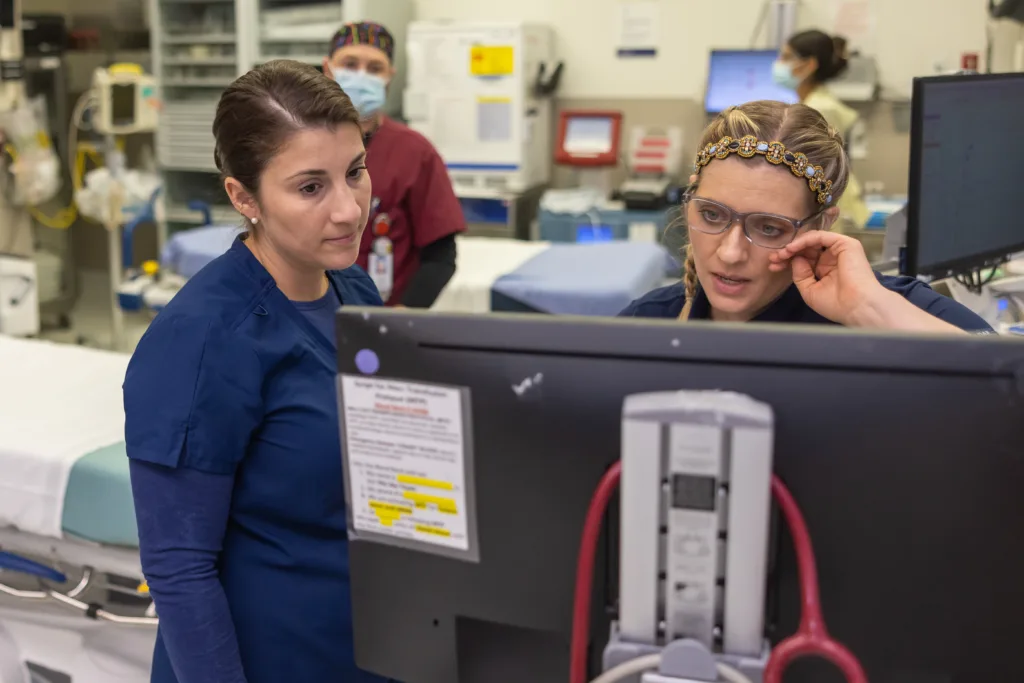Acute Care


The Acute Care Division is responsible for the development, implementation, and management of emergency healthcare system programs and initiatives to improve care to patients across the region. The focus of these programs revolves around both pre-hospital and hospital facets of care provided to trauma, cardiac, stroke, pediatric, and perinatal patients.
If you would like more information on STRAC Acute Care, please Contact Us.
Acute Care Programs
The Regional Infection Control Officer (RICO) Program is a co-operative approach to addressing the essential infection control and prevention needs of EMS agencies in the STRAC region.
In the 84th session of the Texas Legislature, SB 1574 was passed, placing requirements on EMS agencies to have Designated Infection Control Officers, increase prevention and reporting processes and allow hospitals to provide better information to EMS providers.
The RICO Program provides a mechanism to normalize, centralize and simplify processes for EMS agencies to meet the requirements of SB1574 and provide consistent, quality infection prevention, rapid assistance from qualified Infection Preventionist providers if an exposure occurs while also ensuring regulatory compliance.
STRAC has partnered with San Antonio Fire Department and the Office of the Medical Director, Emergency Health Sciences Department of the UT Health San Antonio to create the RICO program. Dr. David Miramontes, SAFD/EMS Medical Director oversees the RICO program, and RICO manages the day-to-day operations.
If you would like more information about the STRAC Regional Infection Control Officer Program, please Contact Us.
On Call RICO
24/7 RICO Hotline: 210-355-0804
Secure Fax: 210-568-6444
Joi Shumaker, RN
Email: Shumaker@uthscsa.edu
UTHSCSA OMD
Regional Medical Control Officer
Dr. David Miramontes
Phone: 210-265-7891
Email: MiramontesD@uthscsa.edu
UTHSCSA OMD
SAFD Medical Director
The STRAC Regional Perinatal Committee (RPC) meets to provide an open, consensus-driven environment across all relevant disciplines in the development of regional guidelines, processes, quality/patient safety initiatives, and educational opportunities to facilitate efficient and appropriate perinatal care.
Hospital and prehospital representatives responsible for or active in the development or delivery of perinatal care should have a representative at the Regional Perinatal Committee meetings. Emergency Department Directors, Emergency Medicine Physicians, Obstetricians, Obstetrics / Maternity Medical Directors, and Obstetrics Nurse Managers in the STRAC region should attend Regional Perinatal Committee meetings as well as Air and Ground EMS Command Operations, Medical Directors, Chiefs / Directors, Clinical Operations, and EMS Performance Improvement.
If you would like more information about the STRAC Regional Perinatal System, please Contact Us.
The Regional Resuscitation Committee is a collaboration of both hospital and pre-hospital representation from agencies across all regional acute care committees. Members of this committee include subject matter experts in the fields of Cardiology, Neurology, Nephrology, Gastroenterology, Pediatrics, Rehabilitation, Extracorporeal Membrane Oxygenation (ECMO), Pulmonology, Critical Care, and Internal Medicine in a coordinated approach to the care of the patient experiencing cardiac arrest, pulmonary embolism, and sepsis/septic shock.
If you would like more information about STRAC Resuscitation, please Contact Us.
Pulmonary Embolism Response Team
In an effort to expand access to Sexual Assault Nurse Examiner (SANE) services throughout our region, STRAC has launched centralized dispatching of SANE nurses through MEDCOM. This initiative was made possible through a regional Memorandum of Understanding (MOU) with our member hospitals, and our contracted SANE provider, creating a coordinated system.
Hospitals and law enforcement can now contact MEDCOM 24/7 to request a certified SANE nurse. Upon receiving a request, MEDCOM immediately coordinates with the contracted provider to dispatch a nurse directly to the requesting facility. This new centralized system streamlines the process, ensuring that survivors receive expert care more quickly and efficiently.
Previously, many survivors faced delays or needed to be transferred to specific hospitals for a forensic exam. Now, adult patients can be seen at a variety of hospitals across the region, reducing the need for unnecessary transport and allowing survivors to receive care closer to home. This change significantly improves access, shortens wait times for examinations, and supports a trauma-informed response for survivors of sexual assault.
Please note that pediatric patients will continue to receive care at the CHRISTUS Children’s Hospital. However, with this new regional approach, adult survivors have more options and faster access to expert forensic nursing care when and where they need it most.

Regional / Statewide Project History:
- The Texas EMS Wristband project originated from Senate Bill 800 as a statewide project sponsored by the 86th Texas Legislature.
- Beginning in December 2020, Regional Advisory Councils (RACs) across the state have led the development and implementation of this project with participating hospitals and EMS agencies.
- The GOAL is to provide a unique identifier to be used to link records or patient data delivered from EMS throughout the continuum of care.
Benefit of the Wristband:
- Establish patient accountability during mass casualty incidents (MCI), evacuations, disasters and throughout the continuum of care
- Increase the ability to collect accurate patient information
- Expedite record reconciliation and matching across various agencies/systems
- Facilitate outcome sharing between prehospital and hospital agencies
- Provide time and cost savings in locating and access records across multiple systems
Overview:
- EMS or Prehospital Transport will place a wristband on ALL transported patients and record the ID# in their electronic patient care report (ePCR)
- Receiving medical facilities will leave the wristband on the patient and record the ID# in their electronic medical record (EMR)
Committees and Workgroups
Air Medical Providers Advisory Group
Cardiac Coordinators
Cardiac Systems Committee
Stephen Harper, MD
Cardiac Systems PI
Stephen Harper, MD
Education
Mike Shown, LP
Emergency Department Operations
Pam Dwyer, RN
EMS Leaders
Casey Ebrom, EMT-P, FP-C
EMS Medical Directors
Injury Prevention
Christina Miramontes, RN
MEDCOM Advisory Group
Pediatric Systems Committee
Perinatal Systems Committee
Regional Whole Blood Committee
Resuscitation Committee
Sepsis Committee
Stroke Coordinators
Michele Patterson, RN
Stroke Systems/PI Committee
Adam Blanchette, MD
Trauma Coordinators Committee
Chillon Montgomery, RN, LP
Acute Care Resources
| Title | Categories | Link | hf:doc_categories |
|---|
